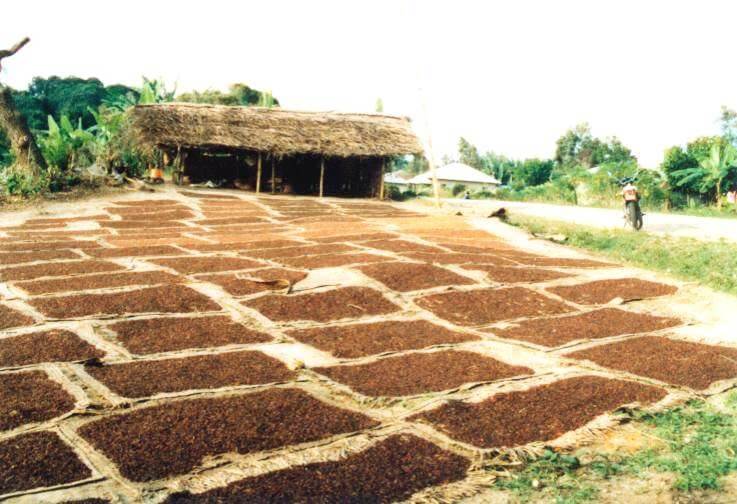Cloves are intensely flavored spices
Cloves are the dried, unopened, nail-shaped flower buds of the evergreen tree Syzygium aromaticum. The name “clove” derives from the Latin word for nail, clavus (because of its shape). Clove goes by many names in different languages such as ding xiang (Mandarin Chinese), laung (Hindi), clavo (Spanish), clou de girofle (French), chiodo di garofano (Italian), qurnafl (Arabic), and nelke (German).
Cloves are used in the cuisine of Asian, African, Mediterranean, and the Near and Middle East countries, lending flavor to meats (such as baked ham), curries, and marinades, as well as fruit (such as apples, pears, and rhubarb). Cloves may be used to give aromatic and flavor qualities to hot beverages, often combined with other ingredients such as lemon and sugar.

A major component of clove taste is imparted by the chemical eugenol, and the quantity of the spice required is typically small. It pairs well with cinnamon, allspice, vanilla, red wine, basil, onion, citrus peel, star anise, and peppercorns.
Until the colonial era, cloves only grew on a few islands in the Moluccas (historically called the Spice Islands), including Bacan, Makian, Moti, Ternate, and Tidore. One clove tree named Afo that experts believe is the oldest in the world on Ternate may be 350–400 years old.
Cloves were first traded by the Austronesian peoples in the Austronesian maritime trade network (which began at around 1500 BC, later becoming the Maritime Silk Road and part of the Spice Trade). The first notable example of modern clove farming developed on the east coast of Madagascar, and is cultivated in three separate ways, a monoculture, agricultural parklands, and agroforestry systems.
Archaeologist Giorgio Buccellati found cloves in Terqa, Syria, in a burned-down house which was dated to 1720 BC. This was the first evidence of cloves being used in the west before Roman times. The discovery was first reported in 1978. They reached Rome by the first century AD.
Another archeological find of a clove is represented by two examples found at a trading port in Sri Lanka, dated to around 900–1100 AD. From Chinese records during the Song Dynasty (960 to 1279 AD), cloves were primarily exported from the Moluccas by ships originating from the Austronesian polities of Java, Srivijaya, Champa, and Butuan.
Cloves were also present in records in China, Sri Lanka, Southern India, Persia, and Oman by around the third century to second century BC. These mentions of “cloves” reported in China, South Asia, and the Middle East come from before the establishment of Southeast Asian maritime trade. But all of these are misidentifications that referred to other plants (like cassia buds, cinnamon, or nutmeg); or are imports from Maritime Southeast Asia mistakenly identified as being natively produced in these regions.

During the colonial era, cloves were traded like oil, with an enforced limit on exportation. As the Dutch East India Company consolidated its control of the spice trade in the 17th century, they sought to gain a monopoly in cloves as they had in nutmeg. However, “unlike nutmeg and mace, which were limited to the minute Bandas, clove trees grew all over the Moluccas, and the trade in cloves was beyond the limited policing powers of the corporation”. Tourists are told that seedlings from this very tree were stolen by a Frenchman named Pierre Poivre in 1770, transferred to the Isle de France (Mauritius), and then later to Zanzibar, which was once the world’s largest producer of cloves. Current leaders in clove production are Indonesia, Madagascar, Tanzania, Sri Lanka, and Comoros. Indonesia is the largest clove producer, but only export a small portion of the cloves they produce, which amounts to around 10–15% of the country’s clove production. They oftentimes have to import cloves from Madagascar to meet their needs.
